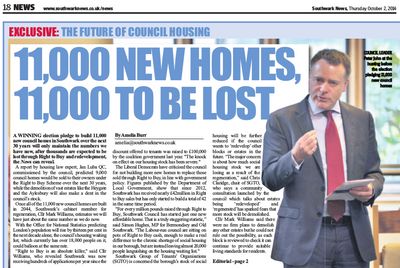
In 2014, as part of its manifesto pledge Southwark Council's administration announced an "ambitious but realistic plan to build 11,000 new council homes" across the borough over the next 30 years. Concerns were raised by us and in the local press that this would fail to make up for the thousands of council homes currently being lost to ongoing estate regeneration, void disposal policies and Right to Buy applications over the next 30 years.
Council leader Peter John subsequently issued an open letter insisting that the 11,000 council homes would be over and above the existing stock count - i.e. a net increase:
 Extract from Council leader Peter John's open letter
Extract from Council leader Peter John's open letter
Councillor John went one step further to pledge that the first 1500 net additional council homes would be finished by 2018:
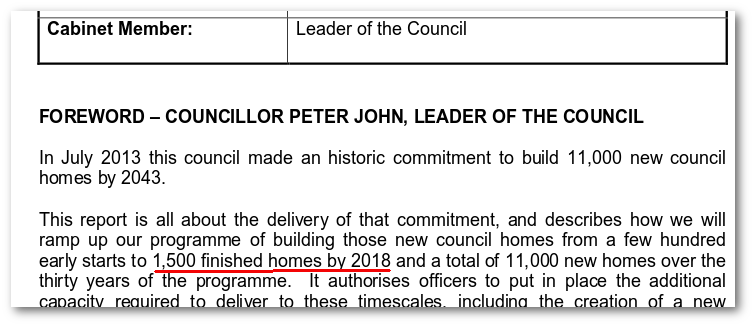 Extract from 2014 Cabinet report
Extract from 2014 Cabinet report
Seven years on and we have taken a look at whether Southwark Council has delivered on its manifesto pledge.
This July 2021 committee report confirms that the council has built just 355 council homes since the programme was announced 7 years ago (para 28).
Official statistics from the government's live tables on local authority dwelling stock show that since the manifesto pledge in 2014 there has been a net reduction in Southwark's council housing stock of 846 council homes.
The rate at which the council is building new homes is clearly not keeping up with the rate at which it is knocking them down and selling them off. The Council has or will demolish over 7,500 council homes as part of regeneration schemes, including 1,200 council homes in the Heygate estate regeneration and circa 2,400 in the Aylesbury estate regeneration.
In addition, it has sold 1,300 council homes under the Right to Buy since 2012 and has an ongoing policy of selling every council home that becomes vacant which is valued at £300k or more.
Buying affordable housing instead
The Cabinet report (para 16) confirms that an additional 258 units of developer-built (S106) affordable housing have been bought by Southwark, to become council housing (para 25). One such example is Blackfriars Circus, where the Council has bought 56 homes for £10m from developer Barratt.
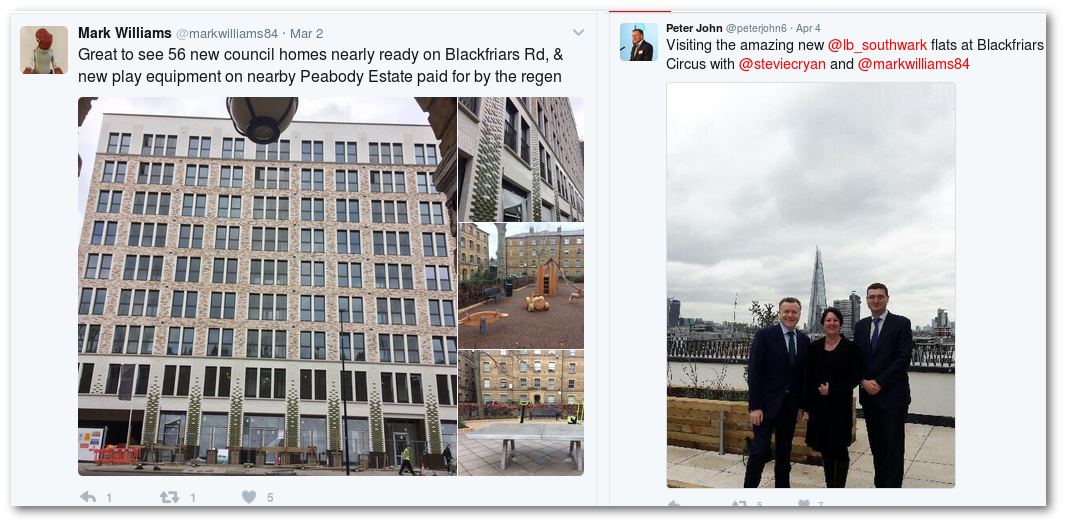
A problem with this method of buying council housing is that it does not actually increase the net supply of social housing - the same units would otherwise have been bought and let by a housing association anyway. Further, Southwark is denying itself the benefit of the S106 contribution, by paying for something a housing association would have paid for anyway - and, rather perversely, denying itself funds for building units that would actually increase the net supply.
It is also not clear whether all the new homes have been let at council rents. We have blogged previously about new 'council homes' now being let at a percentage of market rent (40%) rather than social rent (which is currently approx 20% of market rent).
For example, 54 of the new 'council homes' are temporary accommodation units in (Willow Walk homeless hostel, as are all 37 units in Good Neighbours House, which in any case is not new but simply converted from what used to be a council care home). As with all of Southwark's temporary hostel accommodation units, these are let at LHA rent levels, which are more than twice current council rent levels.
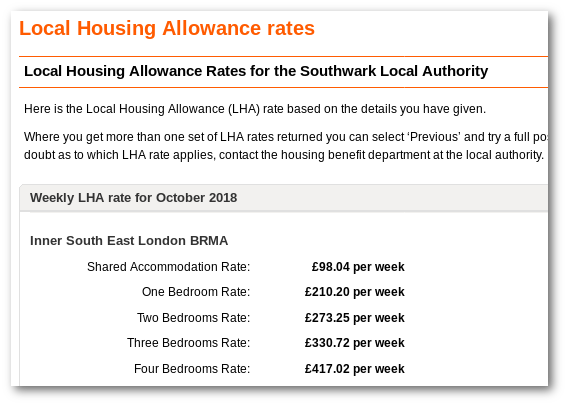
There are also the council homes at Elephant & Castle being let to households on Southwark's new intermediate housing list which it lets at 50% of market rent.
In any event, even if we count these and all the hostel units and purchased S106 units as council homes at council rents, the overall figures still show a net loss of 846 council homes since 2014, mirroring an ongoing decline in dwelling stock:
The figures show that Southwark has lost over 18k council homes, descending from 55k council homes in 1994 to just under 37k in 2023. Just how many of the these are down to estate demolitions and sell offs versus Right to Buy sales is difficult to say precisely.
The best estimate comes from the Council's 2020 Key Housing Stats report which puts the total number of Right to Buy leaseholders at 13,777. From this we can deduce that around 5 thousand council homes have been lost through demolitions and sell offs. Note that around 2,000 council homes on the Aylesbury estate and 500 homes on the Tustin estate remain earmarked for demoltion.

Southwark's 2012 Housing commission report provides a sense check on this figure, confirming that between 1998 and 2010 the Council lost 12,228 homes, of which 8,173 through Right to Buy - the remaining 4,055 through sell offs and estate demolitions:

For those wondering whether the current administration is genuinely committed to council housing Maydew House provides a salutory lesson. This 26-storey block was 'decanted' of its tenants and leaseholders using compulsory purchase powers in 2012 and stood empty for over a decade before being condemned to demolition in 2023, having had £15m spent by the Council on the block during this time.
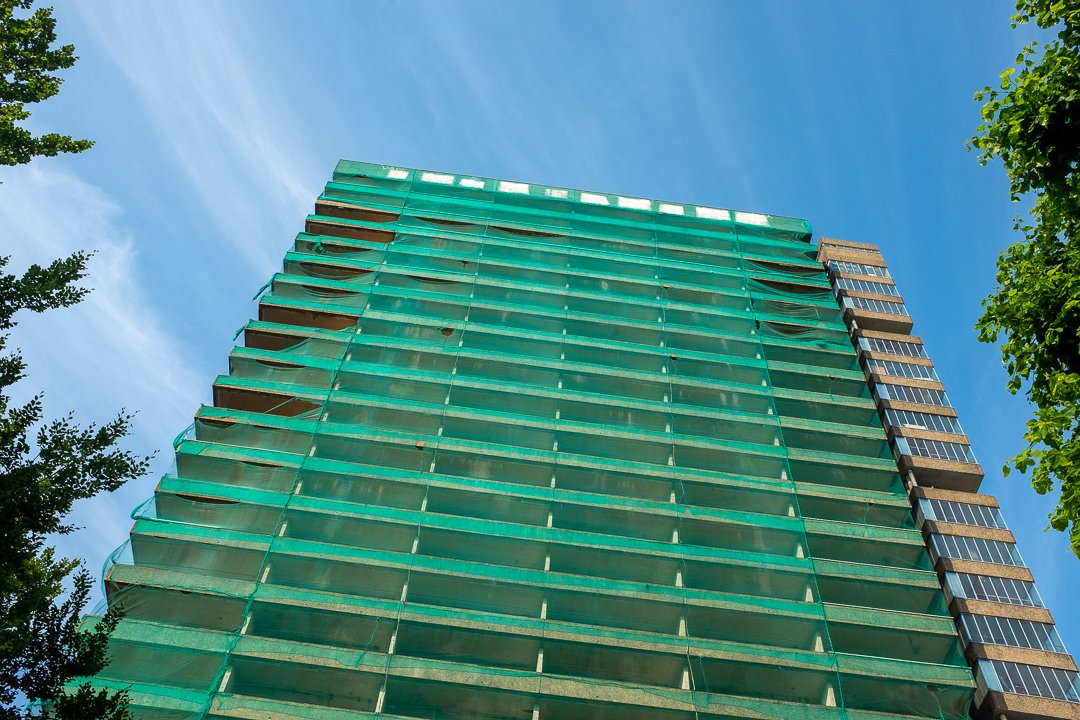
In 2024, Southwark Council announced that it would be abandoning its new homes delivery programme due to spiralling costs and increases in the cost of borrowing.